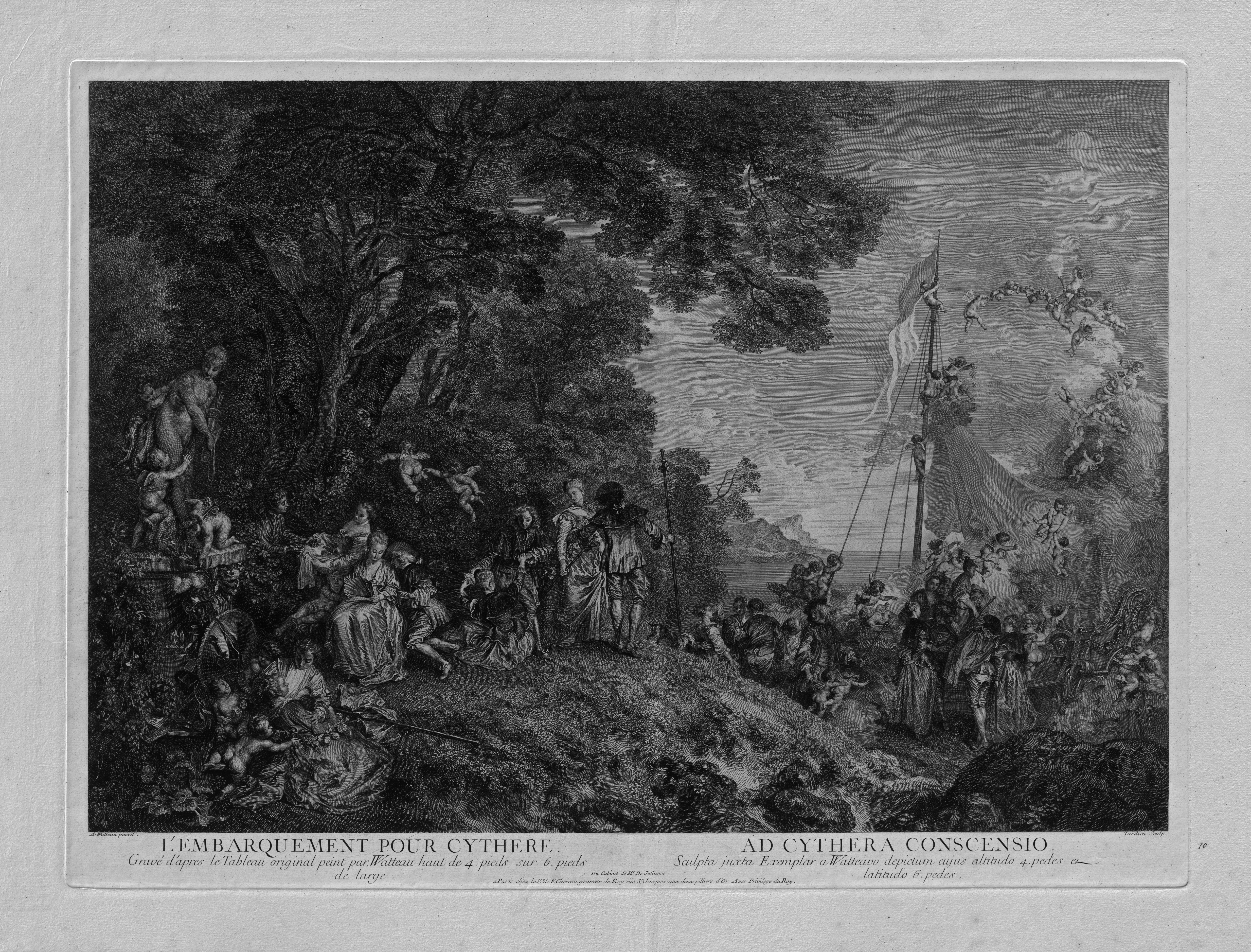Loading the page ...
Nicolas Henri Tardieu
(1674–1749, Paris)
L’embarquement pour Cythère (The Embarkation for Cythera). Etching and burin after Antoine Watteau. 54.3 x 74.3 cm. 1733. Le Blanc 83 II; Heller-Andresen 10; Portalis-Béraldi 1.
“Cette superbe estampe est la maîtresse pièce de l’oeuvre de Tardieu; c’est aussi une des plus importantes de l’oeuvre de Watteau”. It is with these words of praise that Portalis and Béraldi begin their list of the prints made by the engraver, Nicolas Henri Tardieu, who was trained by Jean Lepautre and Gérard Audran. Tardieu was made a member of the Académie Royale in 1720 and his appointment to the position of graveur du roi was another logical step in his highly successful artistic career. Tardieu is regarded along with Benoit Audran as the foremost engraver of works by Watteau. The artist used a highly refined engraving technique combining burin and drypoint to achieve a distinctly painterly effect which does perfect justice to the silvery colour of Watteau’s works. All told there are three versions of Watteau’s Embarkation for Cythera. The oldest and smallest version, which dates to 1710, is now in the Städel Museum in Frankfurt am Main. In 1717 Watteau produced the best known, much larger version which he submitted for his admission to the Academy (Musée du Louvre, Paris). Tardieu’s brilliant reproductive engraving is of the third version made around 1718 which was later bought by Frederick the Great, King of Prussia, and is now in Charlottenburg Palace in Berlin. These fêtes galantes, as they were called, enabled Watteau to establish a new pictorial tradition which perfectly embodies the attitude to life during the Rococo period in France. Tardieu’s reproductive engraving is rightly regarded as one of the most outstanding works of its kind to have been made in the 18th century. Its stupendous technical sophistication and wealth of tone, which fully reflect the essence of Watteau’s art, put this monumental sheet in a class of its own. A very fine impression with wide margins. A flattend vertical central fold, minor ageing and handling traces, otherwise in excellent condition.
Contact us for further information